This website may contain affiliate links and advertising so that we can provide recipes and guides at no additional cost to you. Learn more
While a country renowned for its cosmopolitan haute cuisine, for a true taste of Finland, you simply have to try these Finnish foods, with their hearty textures, wild ingredients, and utterly delicious flavors.
A country defined by its breathtaking geography, the lapping waters and luscious forests have played an integral role in shaping these traditional dishes, some of which have fed Finnish people for generations.
So prepare to discover Finland and its majestic culinary delights on a journey to northern Europe like no other. These are 18 of the country’s must-try dishes, for a historic and traditional taste of Finland.
Traditional Finnish Foods
Bread and Pies
1 – Ruisleipä (Rye Bread)

To most Finns, rye bread would be the most iconic and beloved Finnish food. So much so that when they travel, they bring along some of their favorite rye bread because, in their opinion, you just can’t get good bread anywhere else in the world. It’s even sold at the Helsinki Airport, so travelers can stock up before flying abroad.
The Finnish rye bread is a dark, sour bread made from 100% rye flour. It’s packed with fiber and nutrients, making it a healthier choice than wheat-based bread.
Part of the rye bread’s popularity is due to the fact that rye has adapted to the cold winters and short summers in the north. Centuries ago, when only a few ingredients were available, this highly nourishing bread fed the nation.
Even today, it’s a daily staple in every home and was voted Finland’s national food in 2017.
2 – Karjalanpiirakka (Karelian Pie)
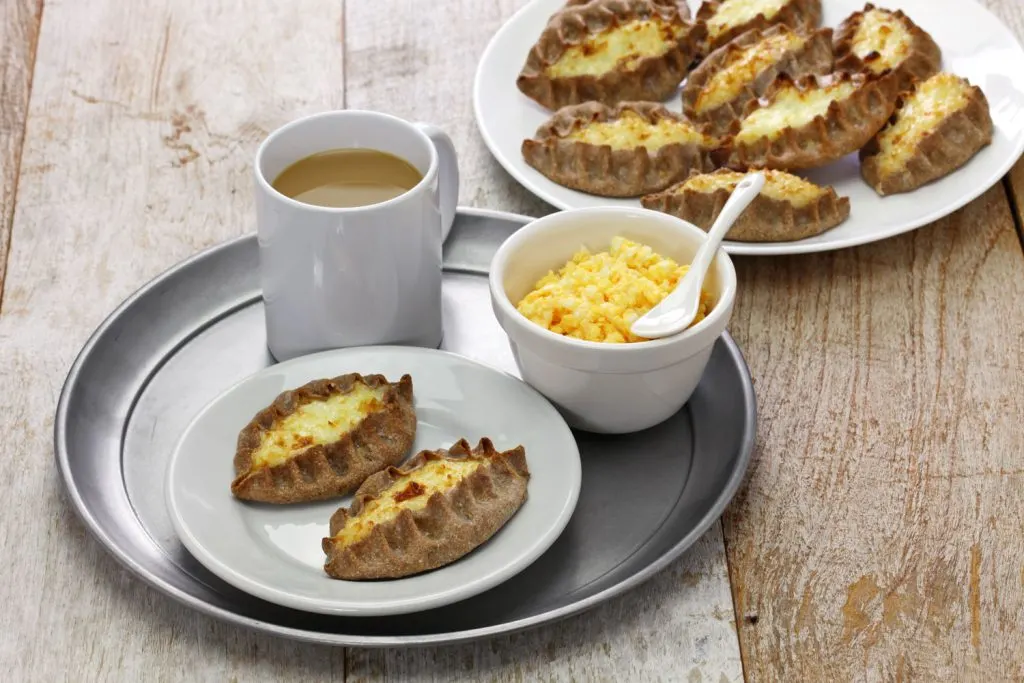
Karelian pie is another beloved Finnish classic that is available in any grocery store in Finland. These famous pies originate from the region of Karelia, but are popular throughout Finland, and even in Estonia and parts of Russia.
Traditionally, the pies were made with rye dough and filled with barley porridge. However, in the 19th century, potato and buckwheat became popular fillings for these pies, with rice coming to the foray later in the century.
Crimping the edges of the pie is a skill that requires years of practice, and mothers traditionally pass this age-old cooking practice on to their daughters.
Even today, many young people are eager to learn the art of making the perfect Karelian pie by learning the traditions of their families.
Nowadays, the pies are mostly filled with rice porridge, mashed potatoes, or rice porridge mixed with carrot puree. The tasty pies are eaten as such or slathered with a mouth-watering mix of butter and eggs (munavoi).
3 – Lihapiirakka (Meat Pie)
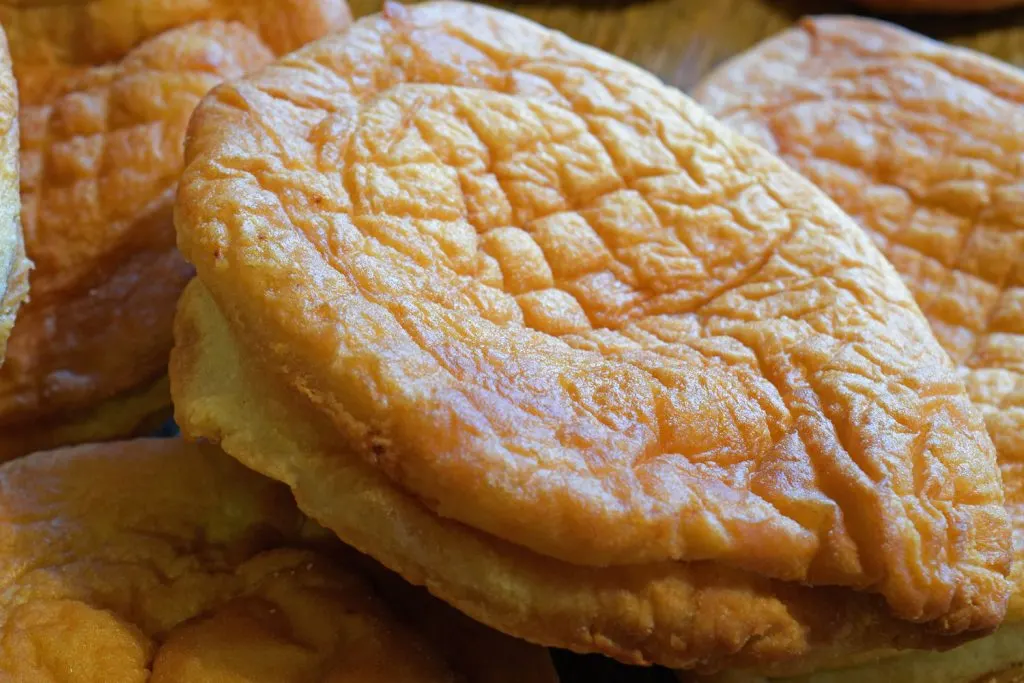
The Finnish lihapiirakka is a traditional and popular snack sold in every supermarket. It’s a savory pie made with doughnut dough, filled with a mixture of minced meat and rice, then deep-fried.
Traditionally, the pie was eaten whole, but it’s common to cut it in half to fill it with sausage and condiments like ketchup and mustard.
This pie has many variations, including atomi (atom), and vety (hydrogen), which originate from Karelia. The former is filled with either ham or egg and the latter with both.
4 – Kalakukko (Fish Pie)
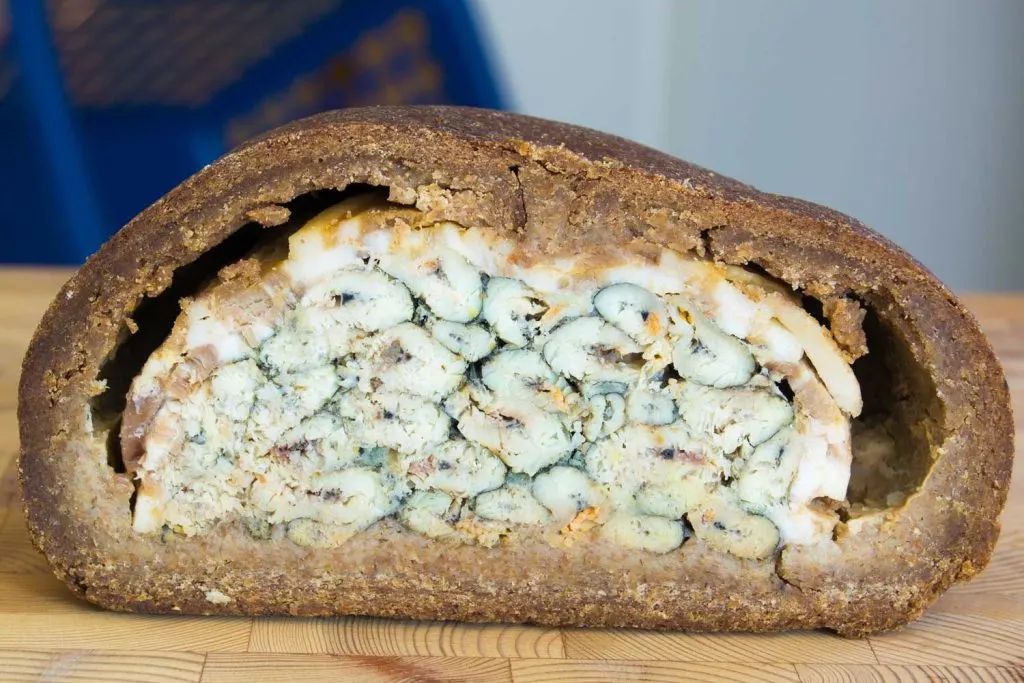
This traditional food is made with fish (usually vendace or perch) baked inside a loaf of bread. The dough is made from rye flour, and from the outside, a kalakukko looks like a big loaf of rye bread.
The food originates from the Savonia region and is especially popular in the city of Kuopio. The city even has an annual kalakukko baking contest.
The filling of the bread is most commonly made of fish, and smaller fish used are often left whole after gutting. The kalakukko is cooked for hours in a masonry oven to ensure the filling becomes tender and juicy, while the crust is left crunchy.
Because the kalakukko will keep for a long time if it’s not opened, it used to be a popular lunch Finns could take with them to work. Traditionally, people would enjoy it with sour milk, known as piimä in Finland.
Appetizers
5 – Uudet Perunat ja Silli (New Potatoes and Pickled Herring)
All spring Finns wait for the first potatoes to mature so that they can finally enjoy the taste of this favorite Finnish appetizer. The potatoes are called “new” or “early” because they are the first to mature from the crop that year.
Compared to “spuds” that mature later, the early potatoes are smaller, have a denser texture, and a slightly sweet taste. The potatoes are eaten with butter, dill, and a sprinkle of salt, and served with fish such as pickled herring.
Pickled herring, on the other hand, is an old and traditional Finnish food. The herring is marinated in spices and vinegar, ensuring it can be preserved for long periods.
All Finns have their favorite marinade, and pickled herring is often served during festivities, including Christmas, new year, and vappu (May Day).
6 – Graavilohi (Cured Salmon)
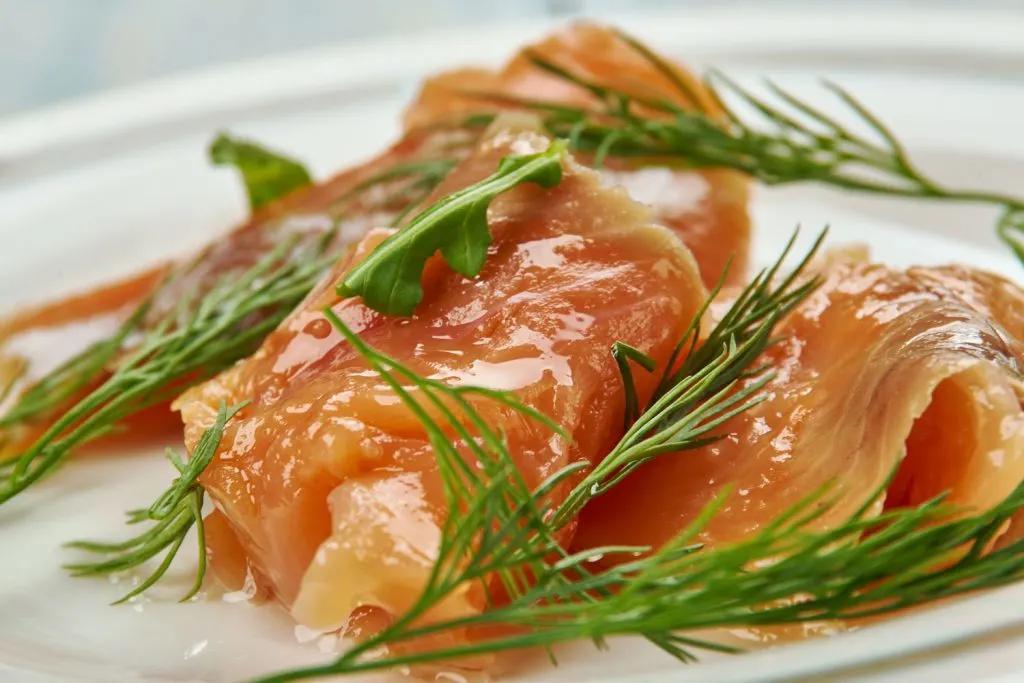
Cured salmon is another popular and cherished Finnish delicacy. It is most commonly served as an appetizer with new potatoes during the summer months, but it’s also a part of the traditional menu during most celebrations, including Christmas.
The salmon is cured using salt and sugar and is usually served with dill and boiled potatoes. While other Finns prefer their cured salmon as it is, others believe cold smoking makes it taste even better.
7 – Paistetut Muikut (Fried Vendace)
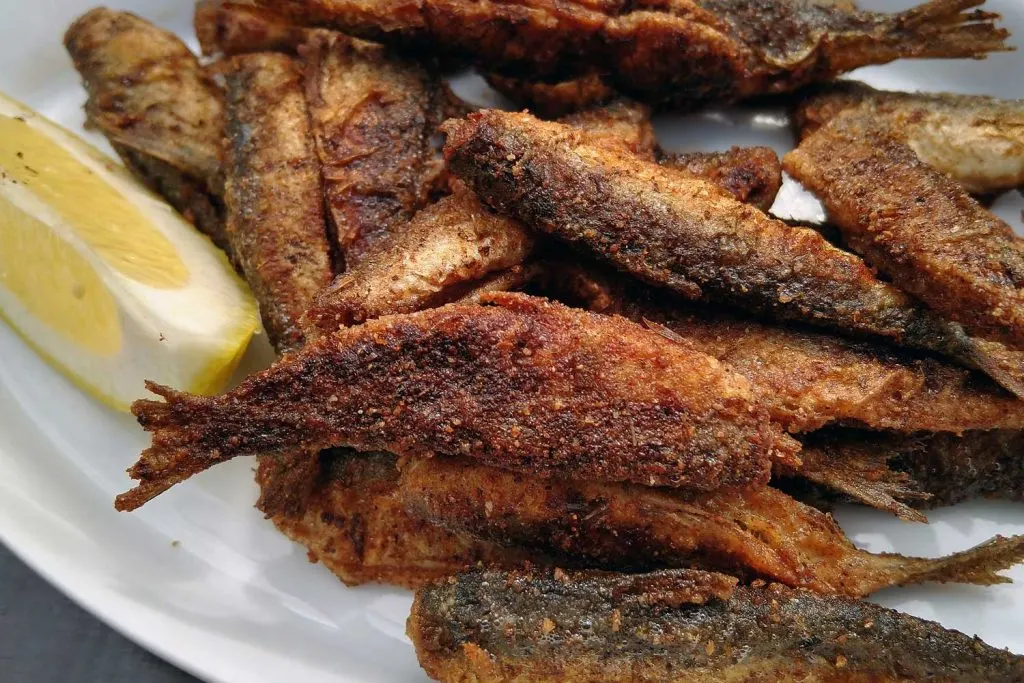
Fish are an important part of Finnish food culture, not only because Finland is surrounded by sea, but also because there are over 150,000 lakes throughout the country. Vendace is a small, flavorsome fish, and a specialty from the Southern Savonia region, renowned for its vast, clean lakes.
Fried vendace is often referred to as the “fish and chips” of Finland, although instead of chips, they are served with mashed potatoes. Although it is a traditional street food-type snack sold in markets around the country, many restaurants also serve it as an appetizer.
Vendace is also very healthy and is called a superfood by many because it’s very high in fatty acids. And, because they are small and soft, they are usually eaten whole, with the head, tail, fins, bones, and all!
Mains
8 – Poronkäristys (Sautéed Reindeer)
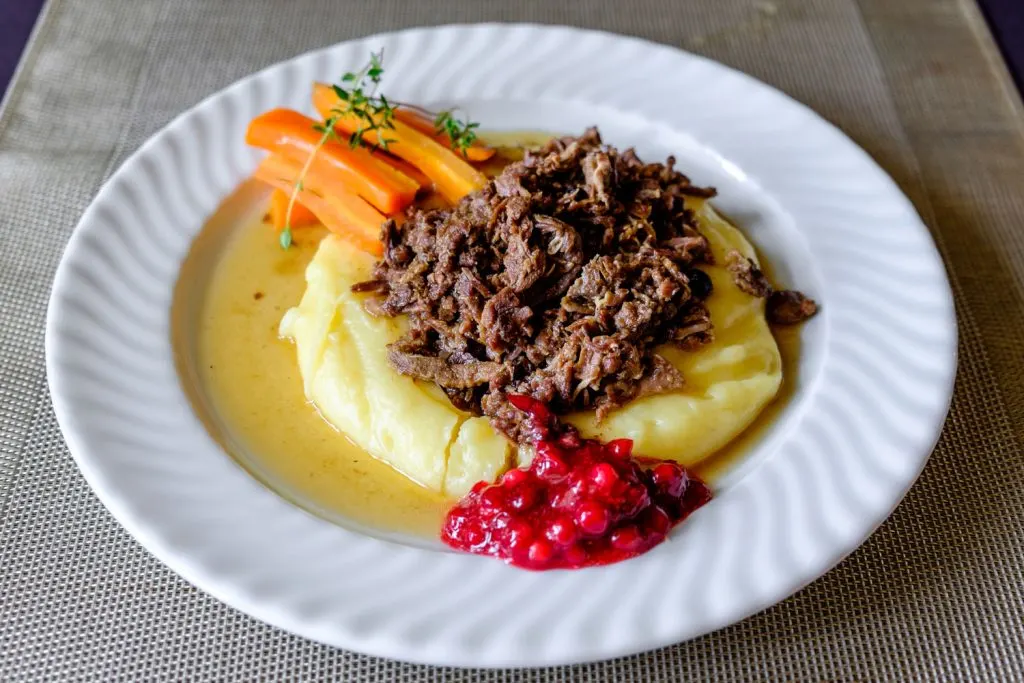
You might be thinking “poor Rudolph”, but this dish should definitely be on your list of foods to try out when visiting Finland. It’s probably the most iconic main dish of Finnish food culture, and it originates from Lapland, where indigenous people called Saame herd reindeer even today.
The food is prepared by sautéing thin slices of reindeer meat with butter and onions, then simmering the meat, often in beer. Traditionally sauteed reindeer is accompanied by mashed potatoes and lingonberry jam.
The dish is usually served in restaurants as a traditional delicacy, but you can also find reindeer meat in most supermarkets, and it is often prepared in Finnish homes during Finland’s independence day in December.
9 – Lohikeitto (Salmon Soup)
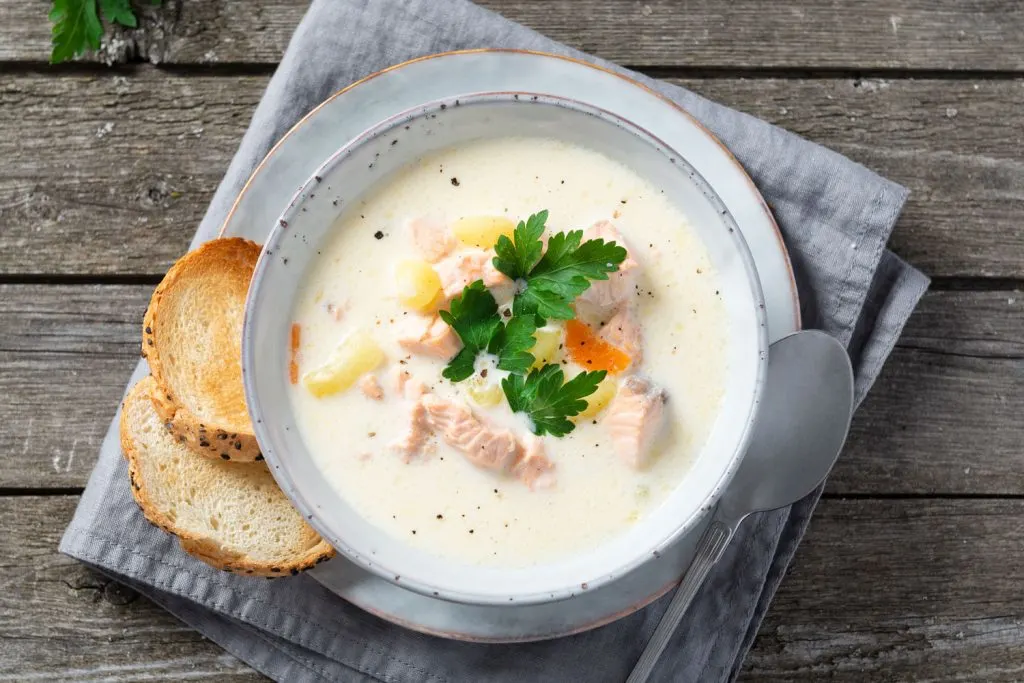
Salmon soup is a popular dish in all Nordic countries, Finland included. A bowl of this hot, creamy soup is exactly what you want to warm you up on a cold winter day.
Although incredibly delicious, the food is quite simple to make. All you need is salmon, fish stock, potatoes, carrots, leeks, celery, fresh dill, and heavy cream with a sprinkle of black pepper and salt.
Salmon soup is another food that is served not only in fancy restaurants as gourmet food but also as a part of an everyday diet in Finnish homes and schools.
10 – Karjalanpaisti (Karelian Meat Stew)
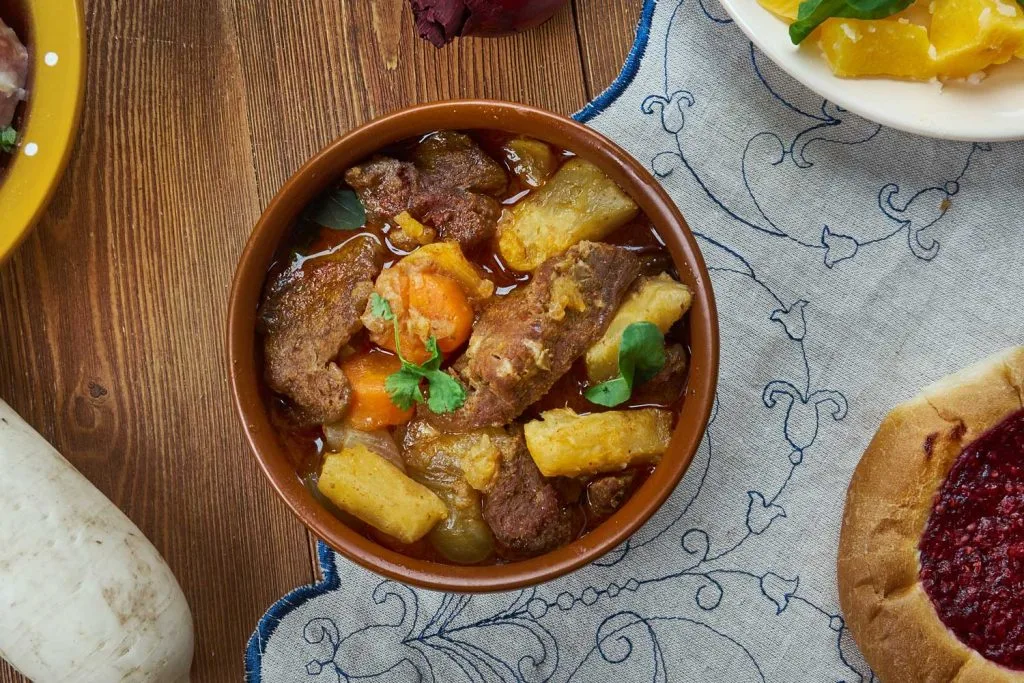
This delicious meat stew is another dish that originates from the Karelia region in Eastern Finland. It is a stew made of beef, pork, and/or mutton, with potatoes, carrots, and onions. It’s seasoned with peppercorns and bay leaves and left to simmer until the meat is soft and tender.
This mouth-watering and hearty stew is especially popular during the cold winter months in Finland. Centuries ago, when meat was scarce, the Karelian stew was only prepared for festivities. However, nowadays it is a common everyday food served in homes and schools throughout Finland.
11 – Kaalikääryleet (Cabbage Rolls)
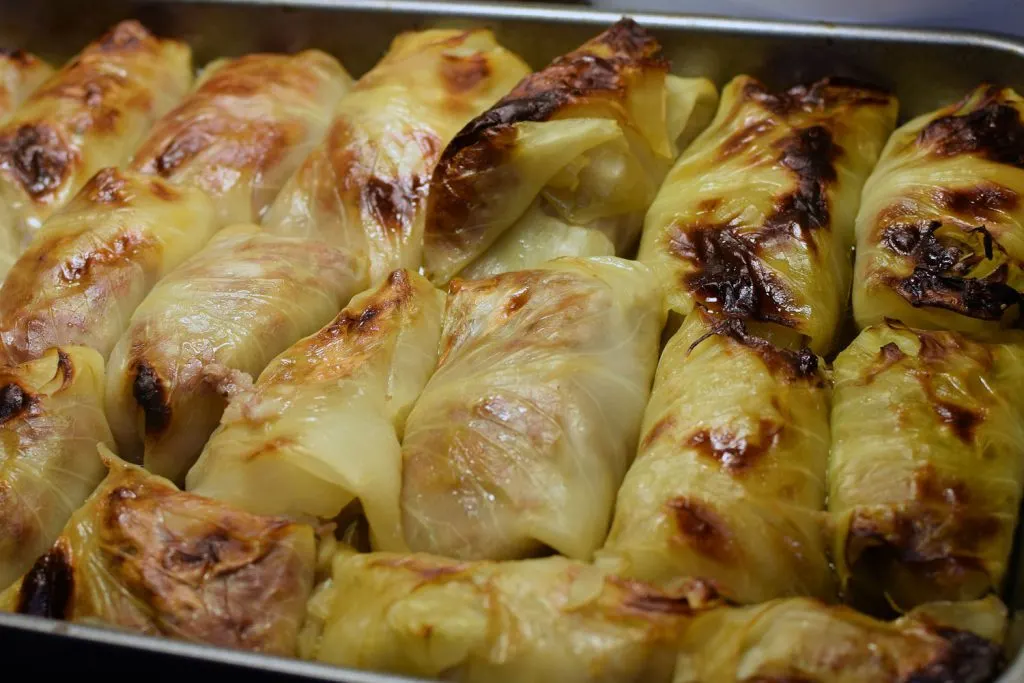
Loved by many, dreaded by others – and probably the most disliked food in Finnish schools – Finnish cabbage rolls divide the nation. Some of us can’t stand the smell of boiled cabbage, while others can’t get enough of this nutritious food.
Finnish cabbage rolls are a dish of cabbage leaves filled with minced meat mixed with rice or barley, and baked in the oven before being served with a side of lingonberry jam.
You can prepare Finnish cabbage rolls yourself, but they are sold ready-made in most supermarkets too if you want a taste, but don’t want your home smelling of cabbage for days!
12 – Lihapullat (Finnish Meatballs)
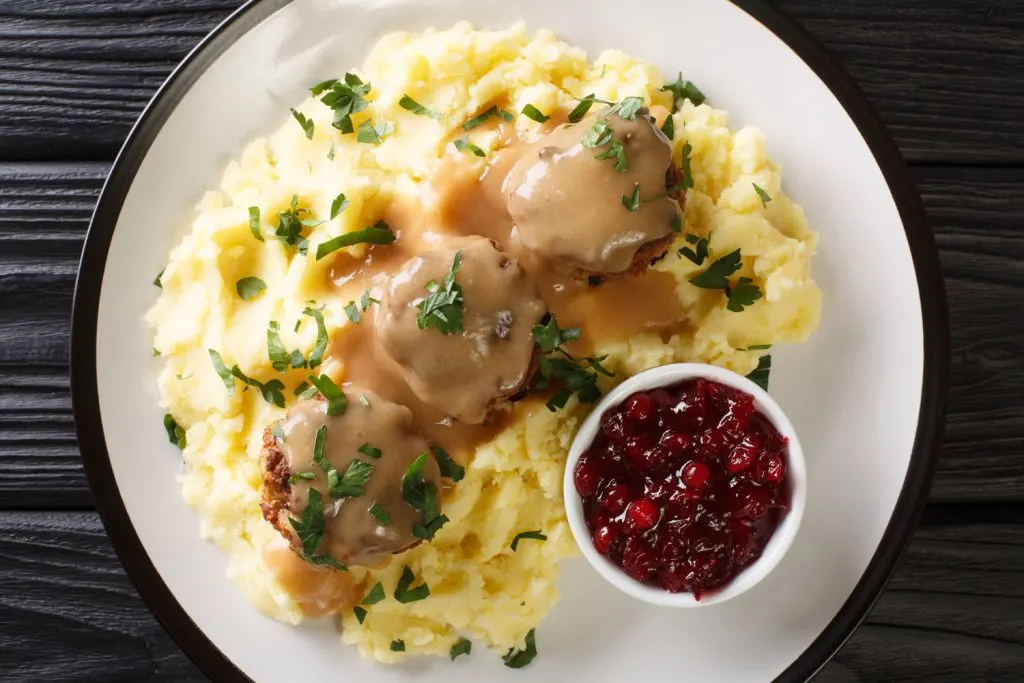
Sweden is famous for its meatballs, but Finns have their traditional meatballs too. Meatballs, accompanied by mashed potatoes, brown sauce, and lingonberry jam, are one of the all-time favorite dishes of Finnish cuisine. Loved by children and adults alike, this dish is a staple of every Finnish home throughout the country.
Take minced pork and/or beef, breadcrumbs soaked in milk, finely chopped onion, spices, and an egg. Mix the ingredients together, roll them into bite-sized balls, and fry them on the pan. Add mash potatoes and brown sauce, and voila – this scrumptious dish, adored by millions, is ready to be served!
13 – Hernekeitto ja Pannukakku (Pea Soup and Pancake)
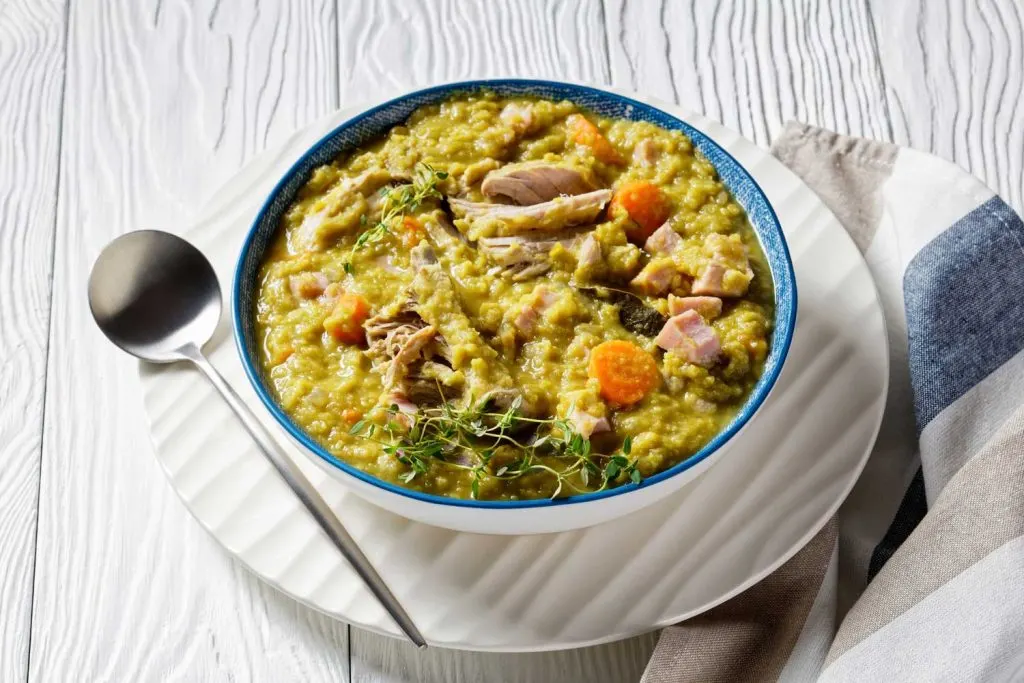
It’s an ongoing Finnish tradition to eat pea soup and pancakes for lunch on Thursdays. Being nutritious and cheap, pea soup has been the perfect food to feed large groups of people through the centuries.
Even today, many schools, universities, restaurants, and the military still continue with this tradition that dates back to the Middle Ages.
Although simple in its appearance, piping hot Finnish pea soup is thick, full of nutrients, and will warm you up on any cold day. It is traditionally made with peas, pork, onions, and mustard, but there are many variations across the country, including a vegetarian option without the pork.
Pea soup is also the traditional food of laskiainen, a religious holiday preceding Easter. During this holiday, Finns go sledding with their friends and family and eat pea soup and laskiaispulla, a cream-filled bun with almond paste or jam (there’s an ongoing debate between Finns on which one is the only real laskiaispulla).
Deserts
14 – Leipäjuusto (Bread Cheese)
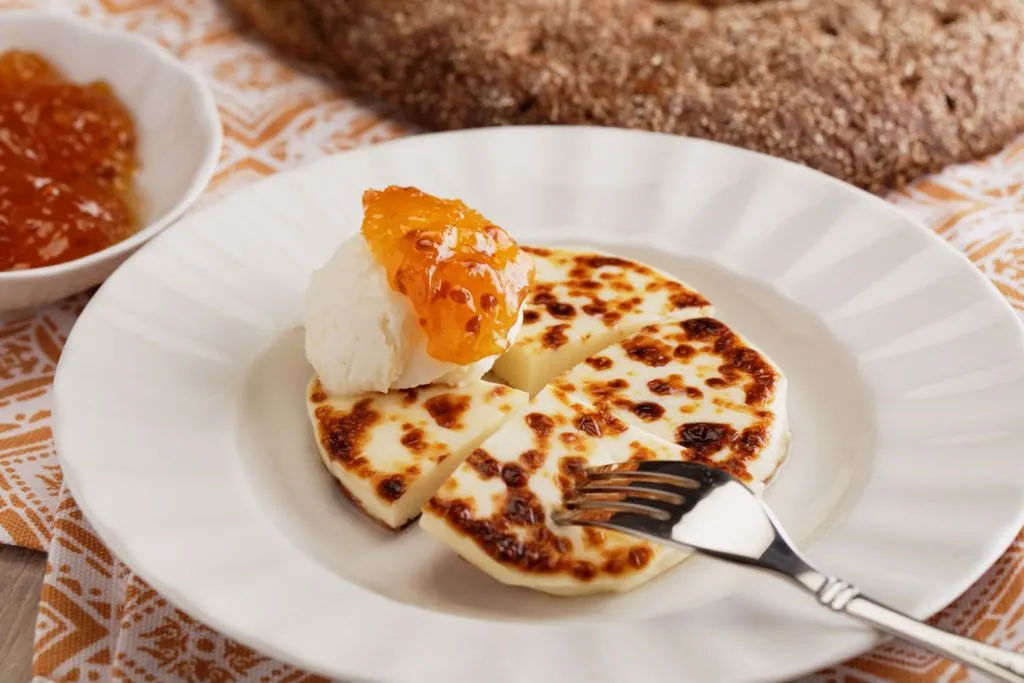
Leipäjuusto (leipä meaning bread, and juusto meaning cheese) is a fresh cheese made from cow’s milk. First, the milk is curdled and made into a round disc a couple of centimeters thick. After this, it is baked or grilled until the surface is charred.
It is also known as the “Finnish squeaky cheese,” which refers to the way the cheese squeaks in your teeth when it’s eaten.
Traditionally, the cheese would be cut into slices and served with coffee. It can also be soaked in coffee, cut into pieces, and served with arctic cloudberries, or soaked in cream and sprinkled with cinnamon and sugar.
15 – Salmiakki (Salty Licorice)
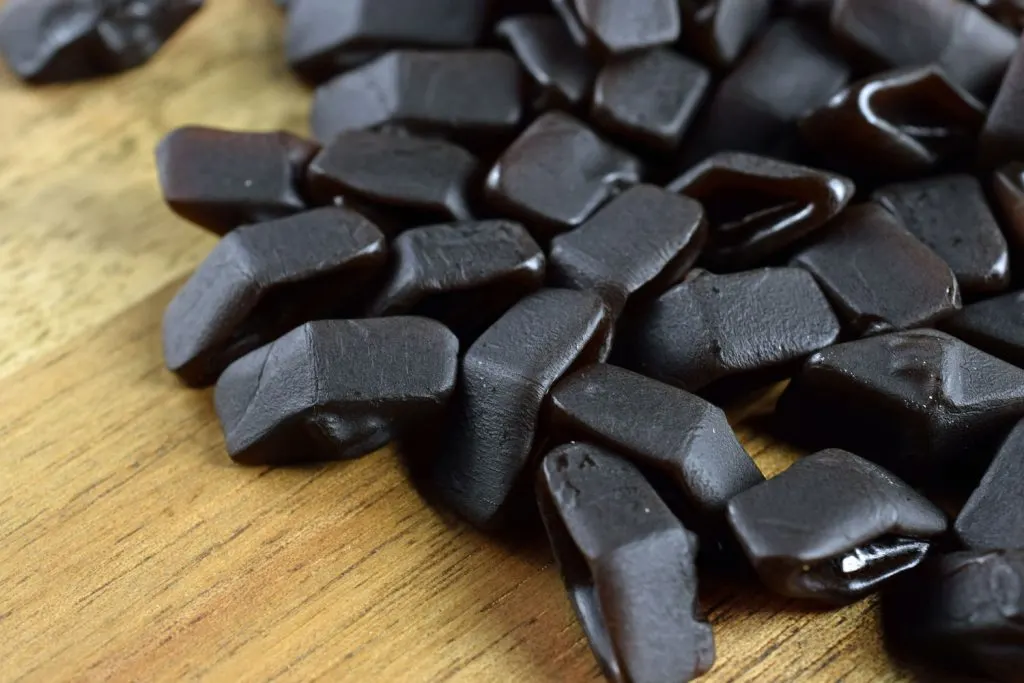
If you ever visit Finland, Finns will most likely tempt you into tasting salmiakki. Finnish people love this salty licorice, but what they love even more is to see the reactions of foreigners trying it for the first time!
And whenever a Finnish person is abroad for longer periods, they will usually take a few bags of licorice with them, and even ask relatives to send more if they run out.
Salmiakki originated from drugstores, where ammonia chloride, which gives salmiakki its taste, was used for treating coughs. It was combined with licorice to get children to take their medicine, but soon it became a popular candy that nowadays is sold in in many varieties in every supermarket.
Actually, Finns love their salty licorice so much, they add it to ice cream, chocolate, cakes, sauces, and even liquor!
16 – Korvapuusti (Cinnamon Roll)

Another beloved dish Finns can’t have enough of is pulla, essentially a sweet bread with a renowned cardamon flavor. It is almost a daily treat, which usually accompanies a coffee break in the afternoon.
The most popular variation of pulla is the Finnish cinnamon roll called korvapuusti, which can, funnily enough, be translated as a “slap on the ear.”
You can find these cinnamon rolls in every café and supermarket, although what Finns love the most is freshly baked cinnamon rolls made with their mother’s recipe.
17 – Mämmi (Finnish Easter Pudding)
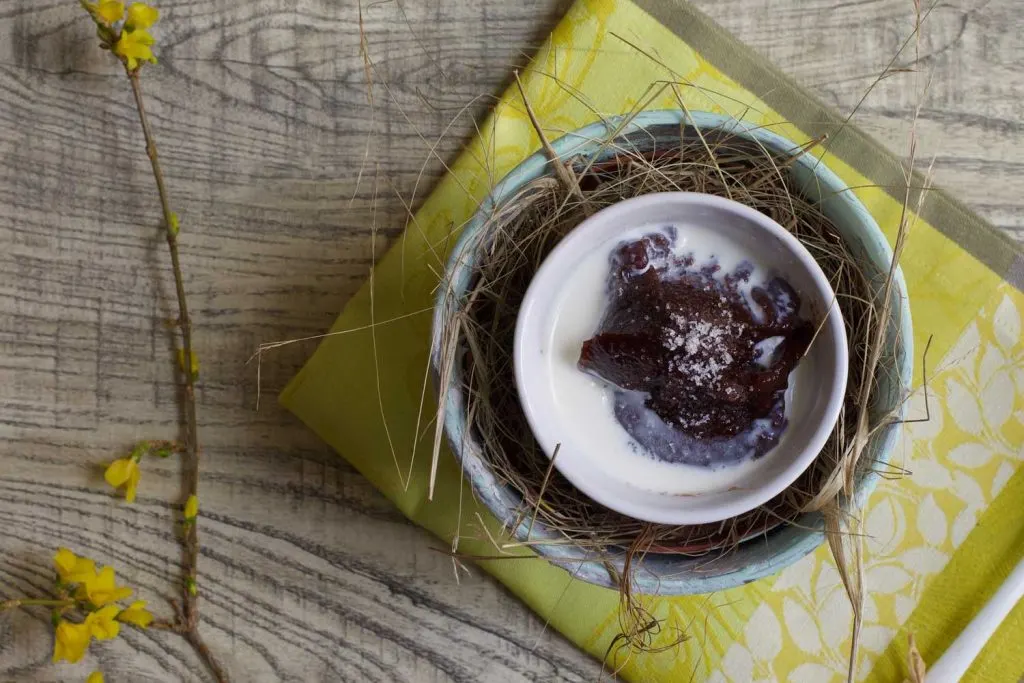
When you first get a glimpse of mämmi, you may question how appetizing this pudding actually is, with its dark brown color and tar-like consistency.
However, mämmi is very much a beloved Finnish dessert. It is a pudding made of water, rye flour, and powdered malted rye, which are mixed together and left to sweeten before, being baked in an oven until the mixture sets.
Finns have been eating it since the 13th century, so although its appearance may not be the most appealing, there’s just something about this dessert Finns can’t get enough of.
Traditionally this pudding is eaten at Easter and is traditionally served with sugar and cream or vanilla sauce.
18 – Mustikkapiirakka (Blueberry Pie)
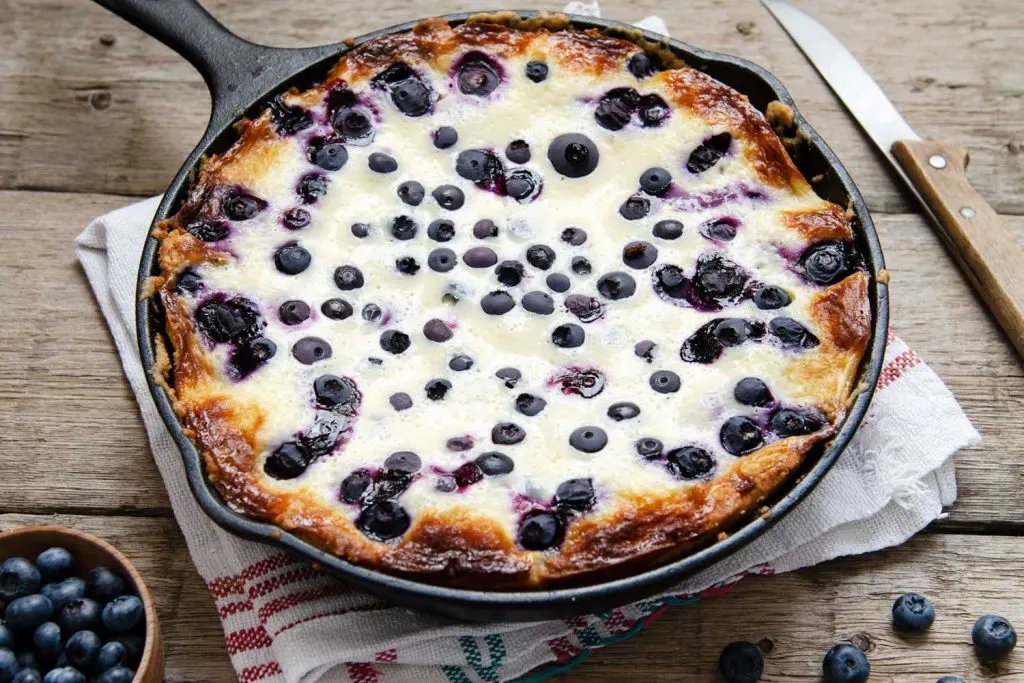
Last but not least, the all-time summer favorite of nearly all Finns: the Finnish blueberry pie.
Every family has its own recipe, and although you can find mustikkapiirakka in most cafes, nothing beats grandma’s blueberry pie, made from blueberries freshly picked from the nearby forest and served hot straight from the oven.
The Finnish summer isn’t complete without an ample piece of blueberry pie, doused in vanilla custard, and a cup of coffee on a warm summer day.
Traditional Finnish Foods Summary
Authentic Finnish food is humble, heartwarming, and brings the delicious ingredients and breathtaking freshness of the land to the forefront, with each and every mouthful.
Finland is not particularly well-known for its traditional foods, which is all the more reason to seek out as many of these dishes as possible, during a trip to the vast and beautiful country.
Bring a generous dose of Nordic magic to your plate, and give these foods a try in eateries and restaurants throughout the country. On behalf of all Finns, we can confirm you’re very much in for a treat like no other!
You Might Also Like to Read
- Swedish Food: 15 Most Popular Dishes to Try in Sweden
- 20 Popular Danish Foods You Need to Try in Denmark
- Norwegian Food: 15 Most Popular and Traditional Dishes
Save and Pin for Later
Planning a trip to Finland soon and want to try as many of these traditional dishes as you can? Keep this article for safekeeping, by saving it to one of your foodie travel Pinterest boards.

Author: Eeva Simonen is a Finnish content writer and blogger, hailing from Helskini. Passionate about Finnish culture and cuisine, she is eager to share more about her homeland with the world through her writing.
Images licensed by Shutterstock
